Get Grasp of Float in Project Management
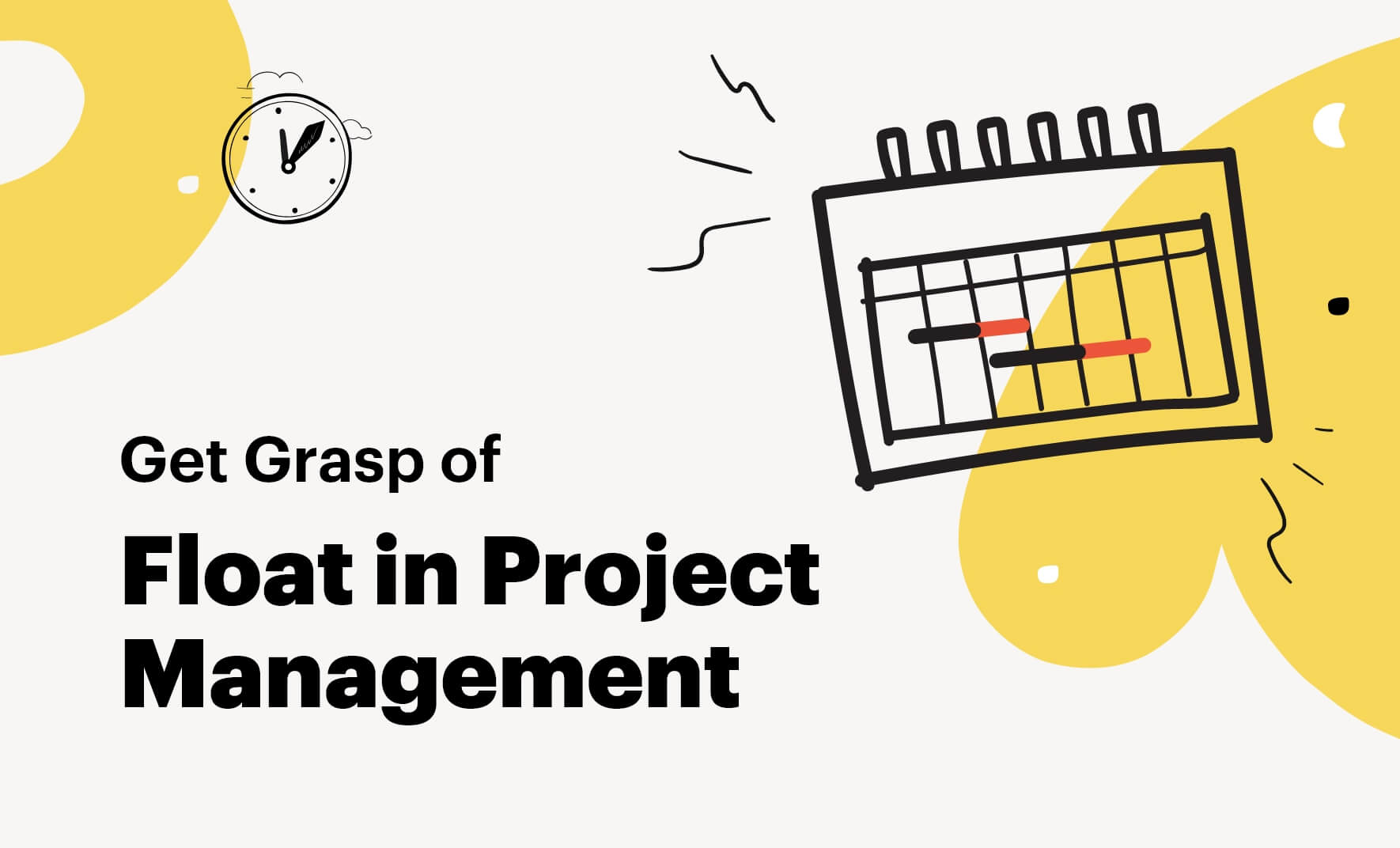
You have probably come across the term “float in project management”, while dealing with projects, and maybe you want to familiarize yourself with it. Or you just found out that it exists, and you want to quickly get the basics.
Don’t worry, we got you covered in this snack article, just read on and you will learn everything you need in just minutes.
Let’s first answer the most important question:
What is float in project management
Float in project management, also called slack, is the amount of time a task, an activity, a project can be delayed without affecting the overall deadline of other tasks, or the project.
It’s a less popular framework than Agile, Kanban and Traditional project management, for example, but it can significantly improve your resource management and resource scheduling.
Calculating float (or slack) can help you validate your project schedules and see if you can meet the set deadlines.
Float project management is one of the best ways to use your team’s time more purposefully and manage projects and their deadlines easier.
Now that we have a basic idea of what a float is, let’s discuss the different types of float (slack).
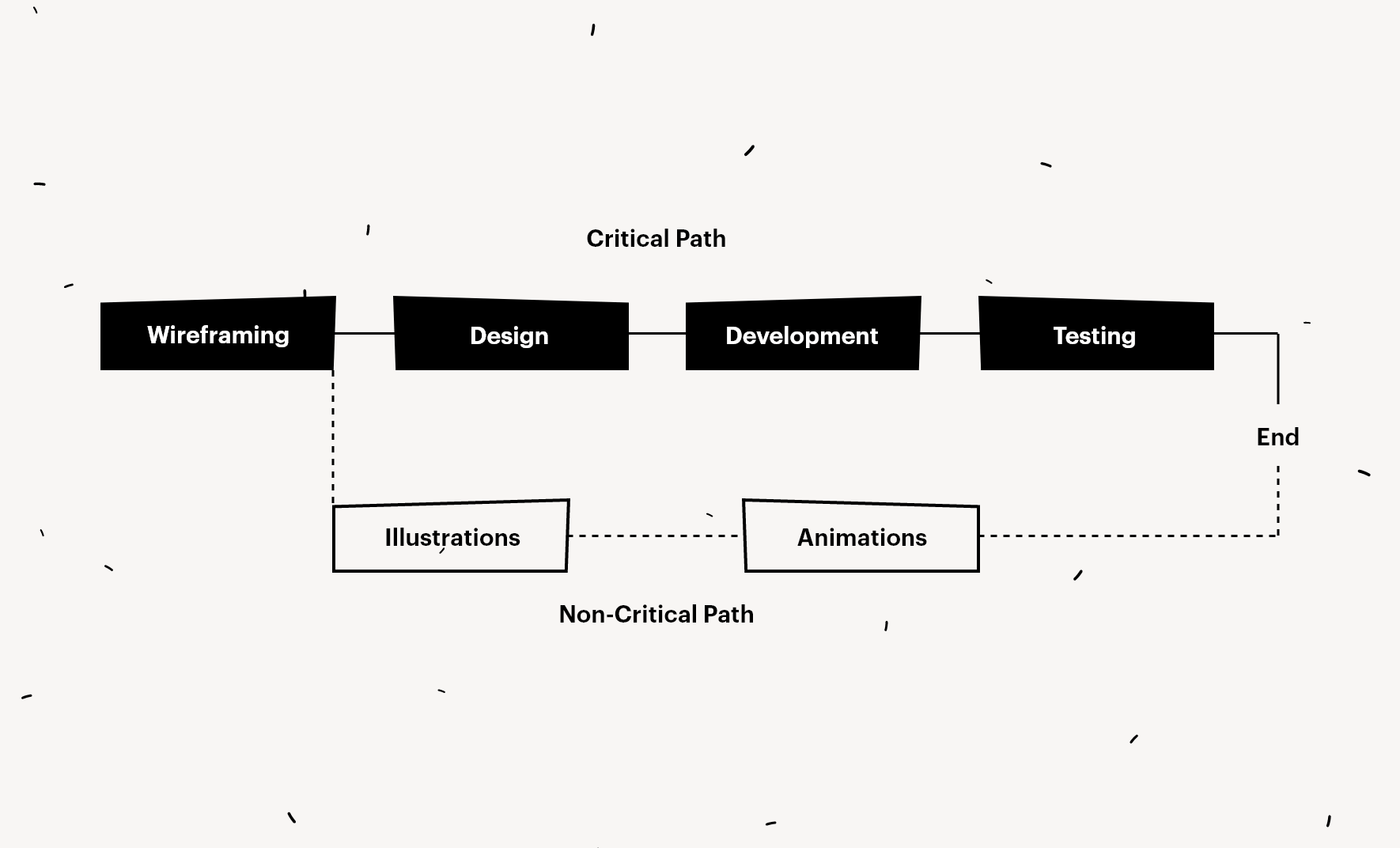
Types of float in project management
There are mainly 3 types of float in project management: zero float, total float and free float.
What is zero float
Zero float in project management is when there is no time between activities, tasks. Such activities and tasks are considered critical.
The obvious thing about tasks with critical path can’t be delayed or moved. It’s crucial for them to be done in time – otherwise the entire schedule would be affected. The delay would impact other tasks and the project’s deadline can be missed.
Using float project management helps you manage critical path tasks and avoid moving or delaying them.

What is total float
Total float, also called float or slack, is the amount of time an activity can be delayed without delaying the overall project duration.
Total float is shared between activities in a sequence. It is the amount of time a task can move without affecting the project deadline.
When we talk about project float, this is generally what we’re referring to.
Example:
If activity A has a duration of 5 days and is occurring concurrently with activity B which has a duration of 10 days, activity A has 5 days of total float. Meaning, it can be delayed up to 5 days without any effect on the project.
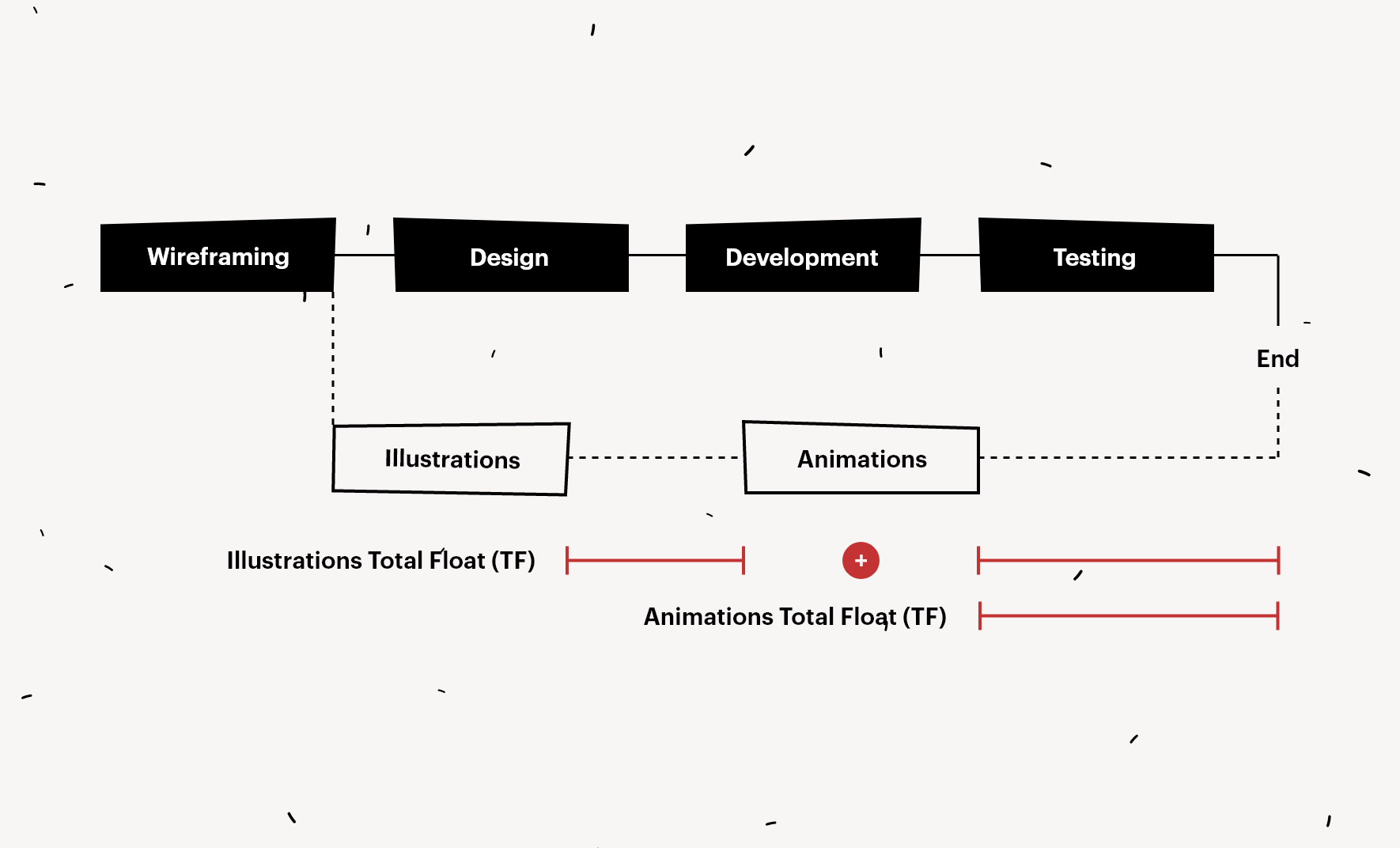
What is free float
Free float is the amount of time an activity can be delayed without delaying the early start of any immediate successor activity.
It’s only calculated on the last activity in an activity sequence.
Free float is the amount of time a task can move without impacting other tasks. A task’s delay isn’t a huge problem if there’s enough free float for the next task to absorb the delay.
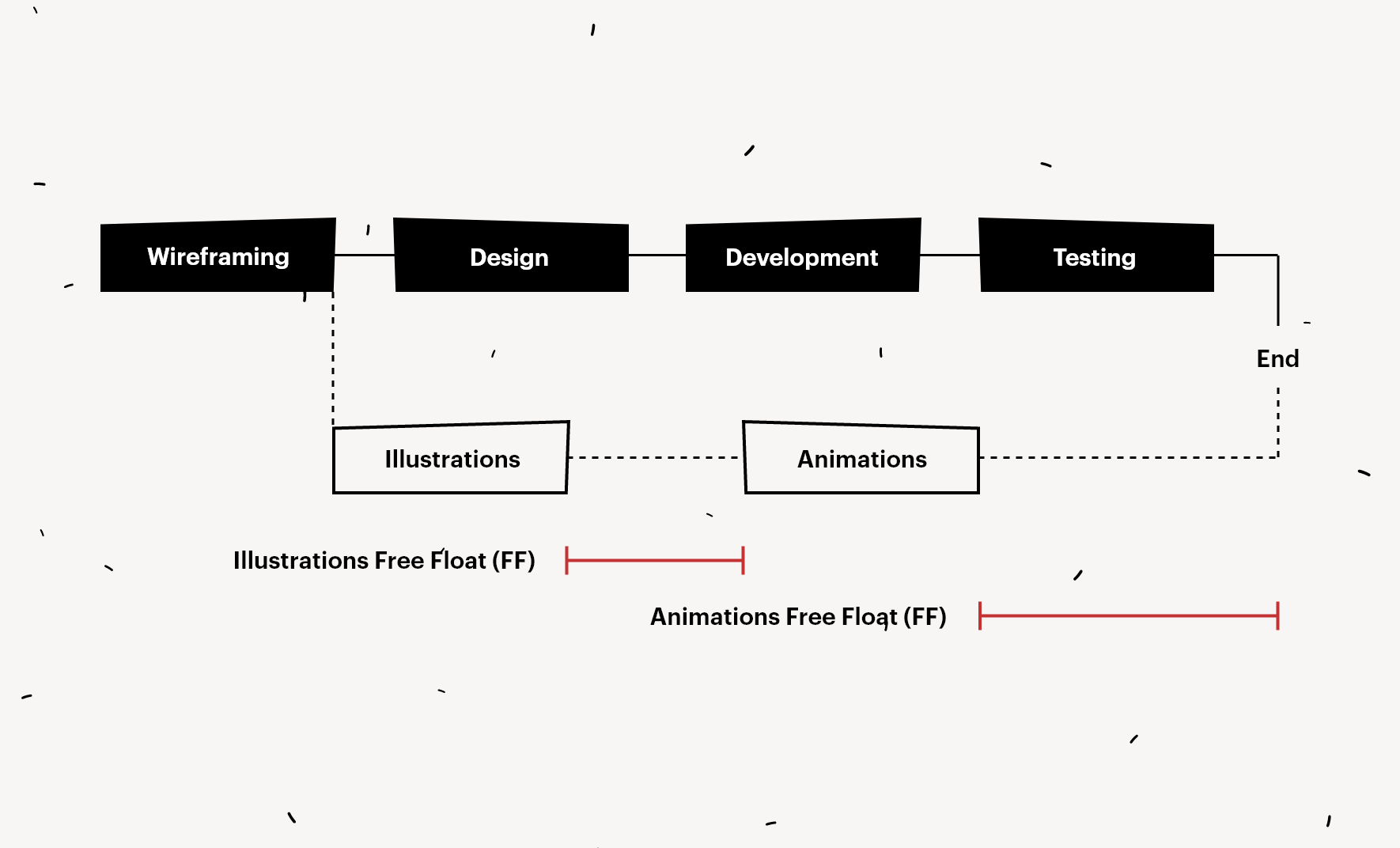
How to calculate float in project management
Float can be fairly easily calculated using float time formulas.
Total float calculation
You calculate float by using the earliest and latest start or finish times for the project.
Here are the 2 formulas for total float:
Total Float = Late Start (LS) – Early Start (ES)
Total Float = Late Finish (LF) – Early Finish (EF)

Free float calculation
The formula for free float is: ES of next activity (earliest start) – EF of the current activity (earliest finish)
Example:
You can start your activity B on Day 24, the earliest. And you can finish your current activity, on Day 18, the earliest.
Using the formula ES – EF – you result with Day 24 minus Day 18, which is 6 Days of free float.
Keep in mind that “it’s only calculated on the last activity in an activity sequence”, meaning that your current activity is the last one of a sequence before you start another sequence of activities.
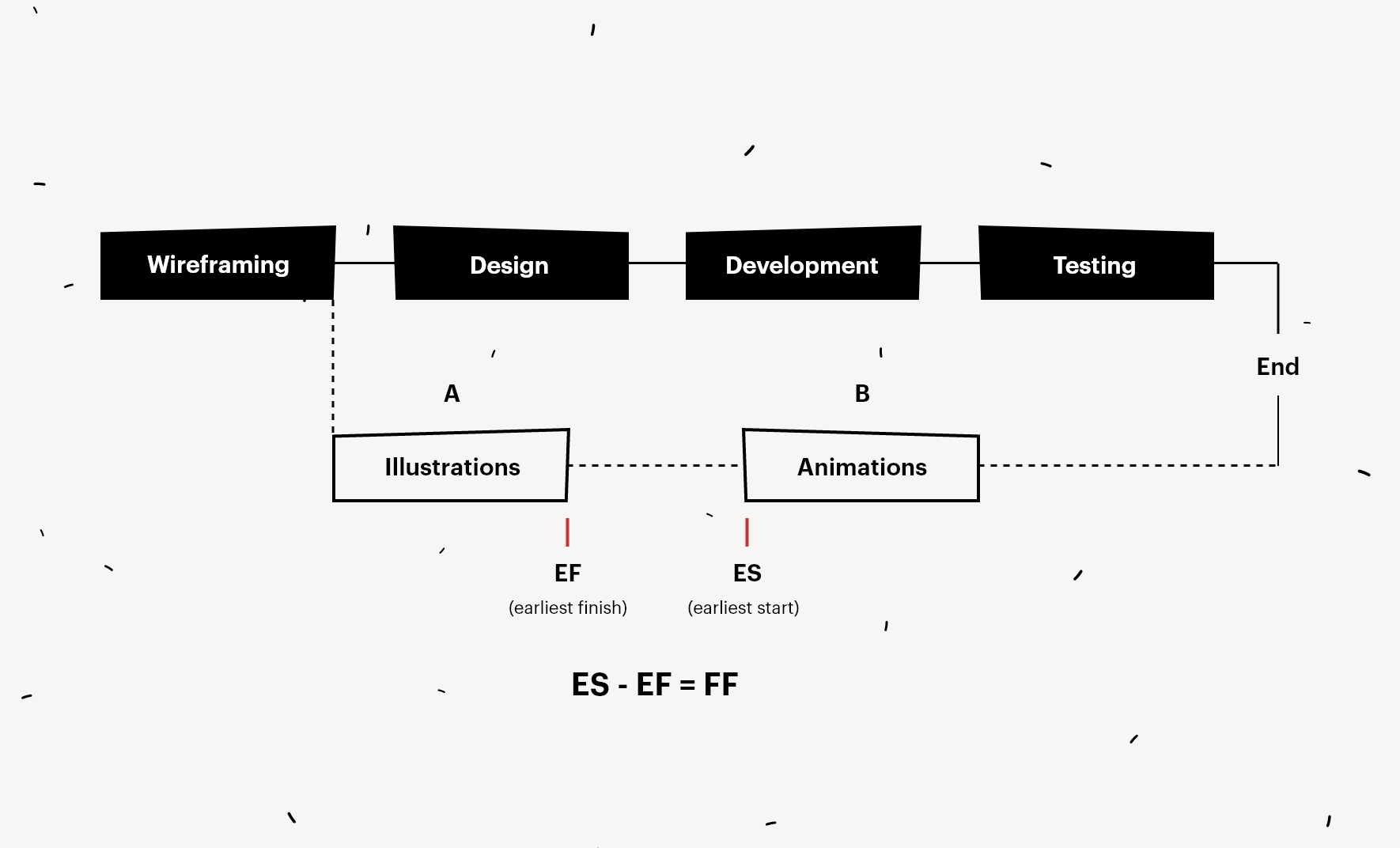
Importance of float in project management
Float project management works especially well for small businesses where the resources are limited and the deadlines- crucial to keep.
It allows small businesses to find out which tasks need to be prioritized and which can be put on the back seat temporarily. That way, key problems are addressed on time, and projects are run more effectively.
Float project management can be used for larger projects as well but needs to be combined with other frameworks.
It is also extremely valuable for the contractors and internal resource managers – knowing your free float and total float, you give your contractors more leeway to work with.
We hope that this article was concise and useful and that it will help you in your work as a project manager.
If you like this article, we recommend these ones as well:
Till next time!